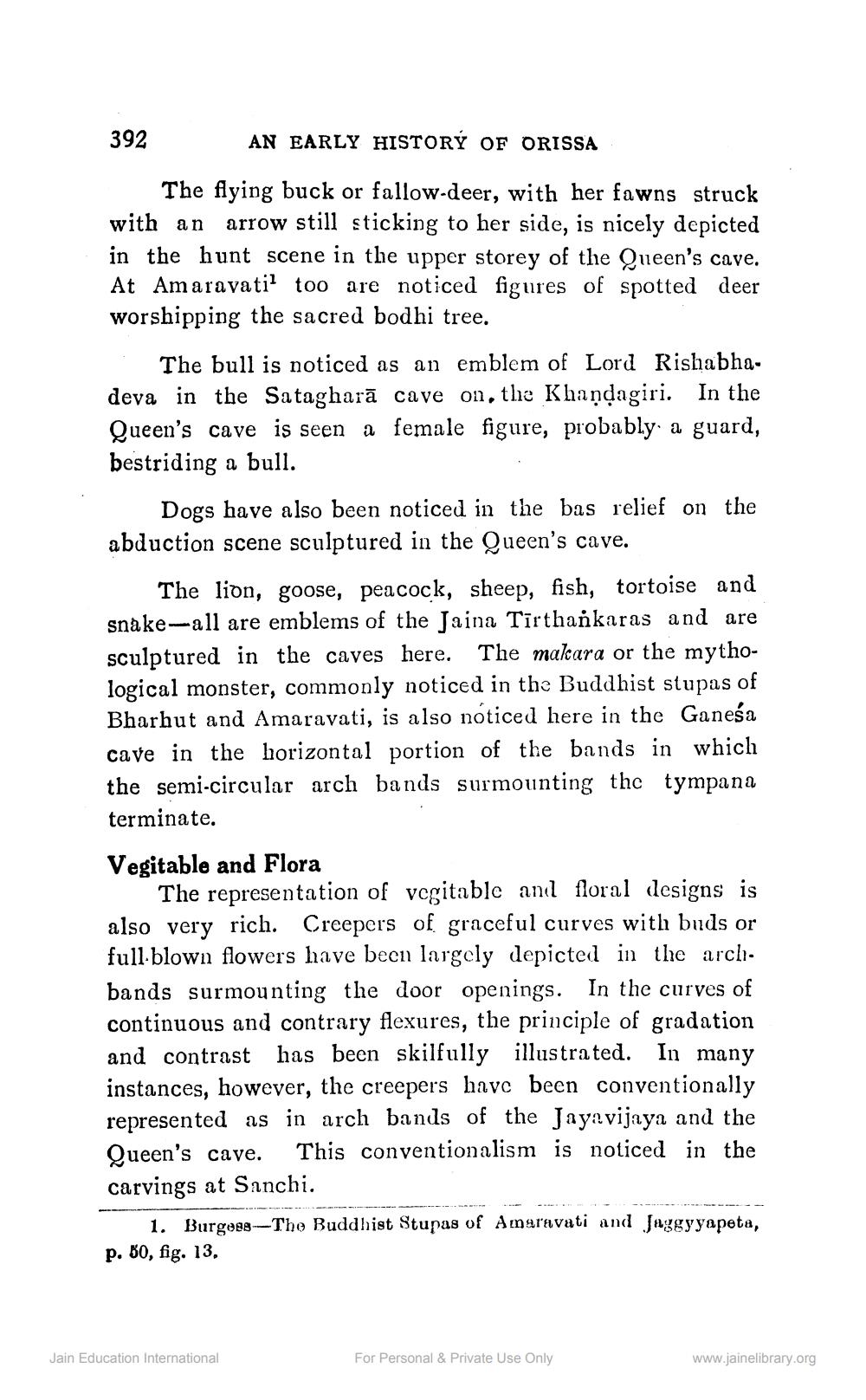________________
392
AN EARLY HISTORY OF ORISSA
The flying buck or fallow-deer, with her fawns struck with an arrow still sticking to her side, is nicely depicted in the hunt scene in the upper storey of the Queen's cave. At Amaravati? too are noticed figures of spotted deer worshipping the sacred bodhi tree.
The bull is noticed as an emblem of Lord Rishabhadeva in the Satagharā cave on, the Khaņdagiri. In the Queen's cave is seen a female figure, probably a guard, bestriding a bull.
Dogs have also been noticed in the bas relief on the abduction scene sculptured in the Queen's cave.
The liðn, goose, peacock, sheep, fish, tortoise and snake--all are emblems of the Jaina Tīrthankaras and are sculptured in the caves here. The makara or the mythological monster, commonly noticed in the Buddhist stupas of Bharhut and Amaravati, is also noticed here in the Ganesa cave in the horizontal portion of the bands in which the semi-circular arch bands surmounting thc tympana terminate. Vegitable and Flora
The representation of vegitable anıl floral designs is also very rich. Creepers of graceful curves with buds or full-blown flowers have been largely depicted in the arch. bands surmounting the door openings. In the curves of continuous and contrary flexures, the principle of gradation and contrast has been skilfully illustrated. In many instances, however, the creepers have been conventionally represented as in arch bands of the Jaya vijaya and the Queen's cave. This conventionalism is noticed in the carvings at Sanchi.
1. Burgess-The Buddhist Stupas of Amaravati and Saggyyapeta, p. 60, fig. 13,
Jain Education International
For Personal & Private Use Only
www.jainelibrary.org




